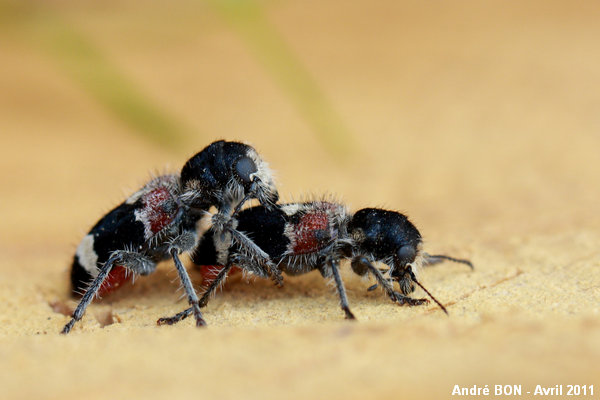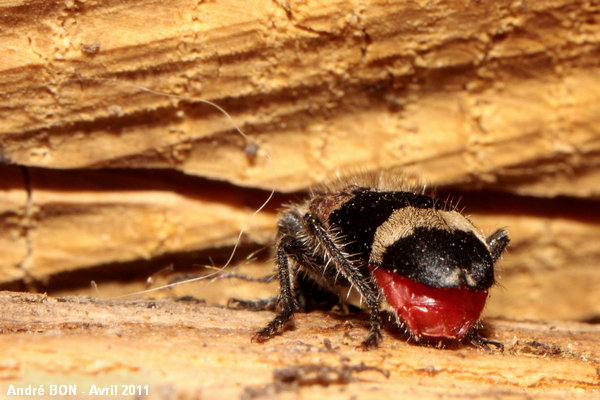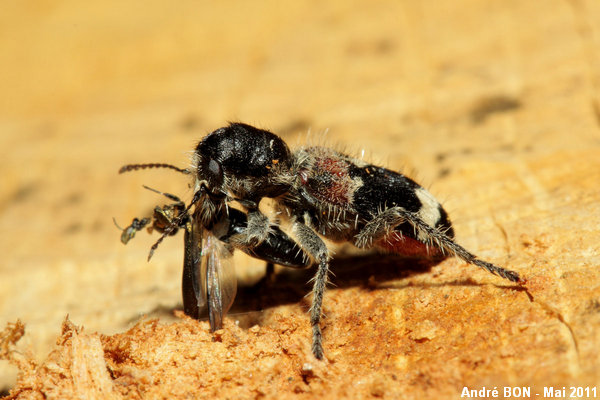



| Checkered Beetle (Clerus mutillarius (Fabricius, 1787)) |




|
|
Scientific name: Clerus mutillarius (Fabricius, 1787) Common name: Checkered Beetle Other names: Other scientific name: Pseudoclerops mutillarius. French name: Clairon mutile, Grand clairon Order: Coleoptera Family: Cleridae Wingspan : 8 to 15 mm. Biotope: In forests, on heaps of wood logs, on lying trunks and tree stumps, with a preference for oak wood. Geographic area: Europe, missing in Scandinavia and in the British Isles. It is now rare in Central Europe. North Africa. Observation period : May to August. |
The Checkered Beetle is a small beetle having a body about three times longer than wide. The abdomen is red. The remaining parts of the body are black. The elytra are colourful. The first quarter is red except the shoulder corner which is black. Then it is black with white markings. A first white thin cross stripe is located just after the red area. This stripe is sometimes reduced to a few white patches. A second larger white stripe crosses the last third of the elytra. The sides of the thorax and the legs show long white hairs. The head is projected downwards and the eyes are rather large. Adults and larvae feed on small xylophagous insects and larvae. |
| [To know more about the Checkered Beetle] [Next picture] [Top] |

|
Here is my first observation of the Checkered Beetle species. I have observed a few of them in an area of forestry work, on recently cut oak stumps. |
| [To know more about the Checkered Beetle] [Next picture] [Previous picture] [Top] |

|
The pale colour of the tree stump gives a nice uniform background. I have also used the tree stump as a support to quietly adjust the focus and the exposure parameters with no risk of moving blur. |
| [To know more about the Checkered Beetle] [Next picture] [Previous picture] [Top] |

|
I have kept this rear view as you can clearly see the red colour of the abdomen. |
| [To know more about the Checkered Beetle] [Previous picture] [Top] |

|
Here is one Checkered Beetle with a prey. I am just wondering if we can tell which species is the prey. |